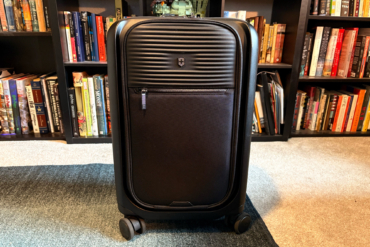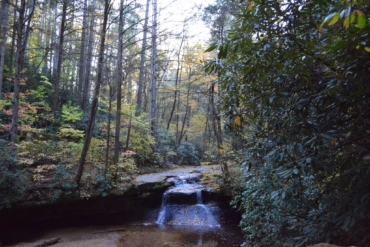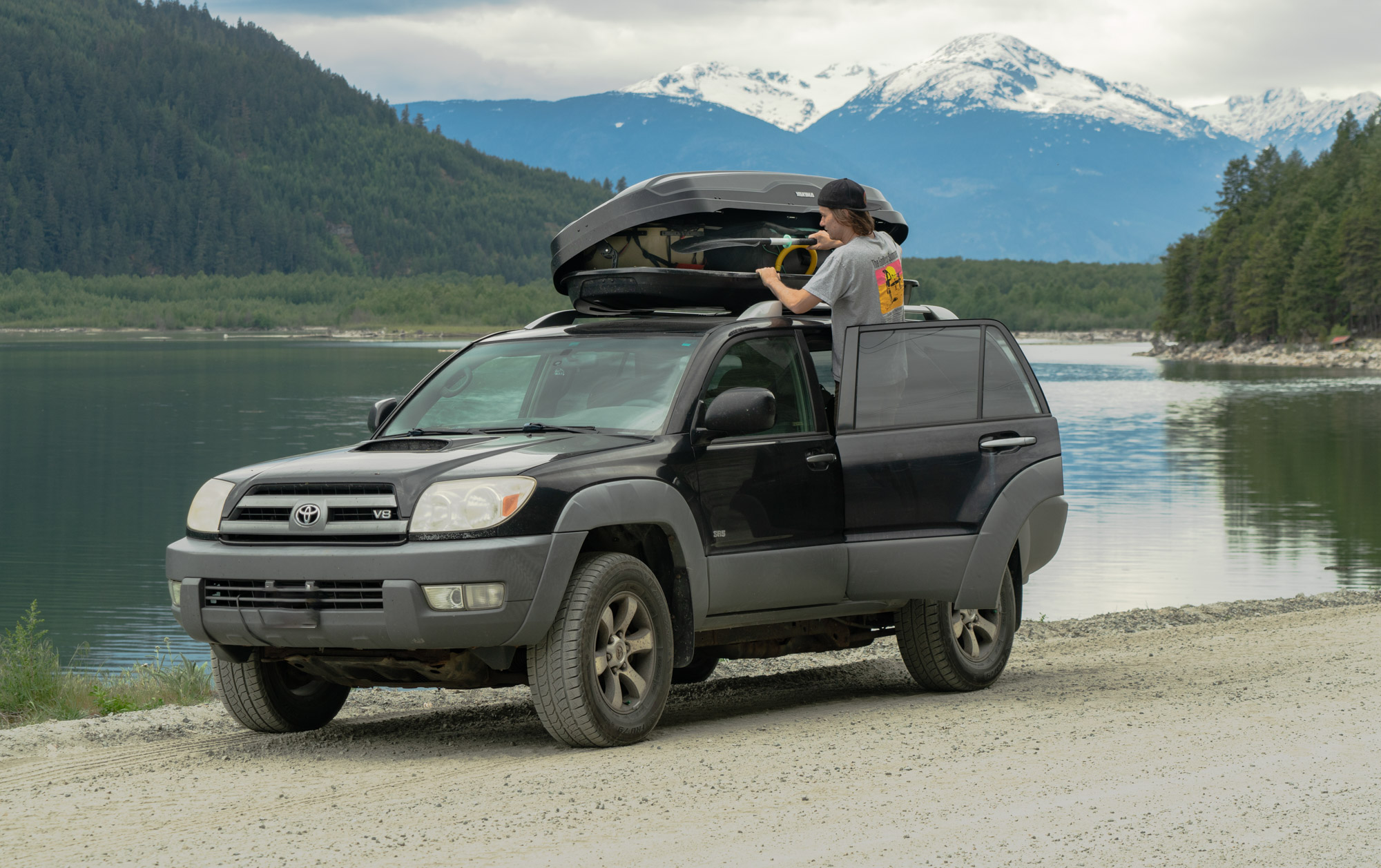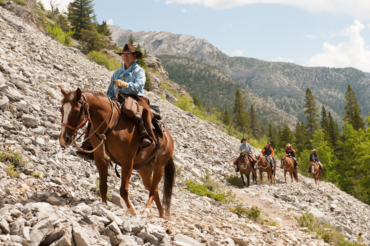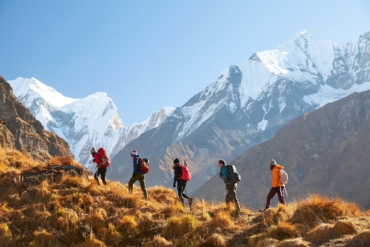You may have never heard of Lassen Volcanic National Park, but spoiler alert — it’s magnificent! We were awestruck on our recent visit and reveled in the feeling that its myriad volcanoes, lakes, waterfalls, and thermal features were our own little secret.
Editor’s note: This article is part of our #NationalParksFieldTrip series, written by GearJunkie editor Kyle Nossaman as he and his wife visit national parks during a full year on the road.
Just east of Redding, Calif., in the northern part of the state, Lassen Volcanic National Park is actually one of the oldest National Parks in the U.S. It’s our ninth National Park, established in 1916 during a series of volcanic eruptions from Lassen Peak, the largest plug dome volcano in the world.
Lassen Peak has been dormant for nearly 100 years and its surroundings have been preserved ever since the last eruption, both for scientific observation and recreation. My wife and I recently visited the park, which we both knew very little about. But its unique beauty quickly surprised us.
Here’s what we loved most — enjoy!
Lassen Volcanic National Park Guide: Summit Volcanoes
Lassen Volcanic National Park is one of the few places in the world where you can find all four types of volcanoes (plug dome, shield, cinder cone, and composite). Even better, you can summit each type.
Lassen Peak, a plug dome volcano with a summit at 10,457 feet, is a must-do. The 5-mile round-trip hike is entirely above treeline, offering expansive views of the park and the distant Mount Shasta. The trail gains 2,000 feet and once at the summit, there’s a fun scramble that reaches the tippy top.

Cinder Cone, in the northeast corner of the park, seems like it belongs on another planet. The volcano stands 748 feet tall and is made entirely of loose volcanic rock called scoria.
The 4-mile round-trip hike is taxing, like walking on a beach, and the final 0.8-mile push to the top is one of the steepest trails we’ve ever been on. The trail climbs to the top of the outer rim, where views of Lassen Peak, the Fantastic Lava Beds, and the Painted Dunes await.

We spent a considerable amount of time atop Cinder Cone. We circumnavigated the outer rim and made our way to the inner rim, then down into the base of the volcano. The surrounding Lava Beds below go on for miles and offer a stark reminder of the volcano’s massive lava flow dating back to the 1600s.
Pro tip: On the way to Cinder Cone there’s a lava tube near Old Station, Calif., that’s worth a visit. It’s a subway-esque tunnel, one-third of a mile long, that’s pitch black and made entirely from a lava flow. Bring your headlamp!

Near Cinder Cone sits Prospect Peak, a shield volcano visitors can summit, though we didn’t have time for it on our trip. Among the fourth and final volcano type, the composite volcano, is Brokeoff Mountain. The trail to the top of Brokeoff is the most strenuous hike in the park, yet the scenery is some of the best.
The 7-mile round-trip hike isn’t for the faint of heart. It climbs 2,600 feet to the knife-edge summit at 9,235 feet. The top has unobstructed views of the east and west, making it a good choice for a sunrise or sunset adventure.
A Taste of Yellowstone (Without the Crowds)
There are a number of geothermal areas in the park, which offer proof that magma still churns under the land. The most popular and active area is Bumpass Hell. The 3-mile round-trip trail meanders to a Hydrothermal Basin where boardwalks visit boiling springs, mud pots, steam vents, and fumaroles.
The scene is reminiscent of geothermal features in Yellowstone National Park. The Bumpass Hell area is beautiful, colorful, and unique, albeit smelly.

Swim in Pristine Alpine Lakes
Our visit to the park was in October and though the weather was perfect (highs in the 60s and lows in the 40s), it was unfortunately too cold for swimming. The park hosts dozens of crystal clear alpine lakes, some a dazzling emerald and others a deep blue. All park waters are available for swimming, except the hydrothermal waters of course.
Emerald Lake and Lake Helen rest alongside the park road and offer up-front views of Lassen Peak. At the very least, plan to stop at those for a quick photo opp.
And if you’re in the park during the heat of summer, consider the hike to Terrace, Shadow, and Cliff Lakes. Each one is beautiful and serene, complete with shorelines and impressive backdrops. Cliff Lake is the farthest lake and the 4-mile round trip trail passes the other two lakes on the way. Bring swim trunks to cool off.

For more forested lakes, try the 19-mile Summit Lakes Trail, which passes eight of them. Many often turn this trek into a two-day, overnight backpacking trip, where the distance almost guarantees the lakes will be yours alone to enjoy.
Backcountry Camping for Free
Speaking of backcountry camping, overnight permits are free and can be easily obtained at the two visitor centers, or at the self-register stations throughout the park. Not all national parks offer free backcountry permits and many sell them in advance online. Unfortunately, this practice leaves the remaining few first-come-first-served permits to those willing to wait in line outside the visitor center.
You can send in an application to reserve a backcountry permit in advance at Lassen Volcanic. But because the park is less popular, walk-in permits are essentially always available.
Over 80 percent of the park is designated wilderness. What’s more, the park boasts seven National Trails, including 17 miles of the Pacific Crest Trail. We’d recommend spending at least a night or two in the park’s wilderness, where you’re almost guaranteed solitude. The Summit Lakes Trail is a good one-night option. But for a more remote experience, consider starting from the Warner Valley, the Juniper Lake area (SE area of the park), or the Butte Lake area (NE area of the park).
National Park Experience Without Large Crowds or Tour Buses
With nearby Mount Shasta, Tahoe, and Yosemite drawing visitors away, Lassen Volcanic National Park isn’t a typical packed-to-the-gills national park. You’ll see no tour buses and the park’s seven campgrounds rarely fill.
Each campground offers a first-come-first-served loop and the Southwest Walk-In campground, located at the Kohm Yah-mah-nee Visitor Center, has a large parking lot that allows camping in vehicles. This means that anyone with an RV or van will never be without a place to stay the night.
On most of our hikes, we saw only a handful of people. The Lassen Peak Trail was more crowded but nowhere close to what’s common on the popular trails in most parks.

Though there are only 150 miles of trails in the park, there are more than enough adventures to warrant a weeklong visit or a jam-packed weekend trip. It’s easily one of the most diverse and unique parks we’ve visited (we’ve been to 25 national parks so far). And its infrastructure and facilities are excellent. If you’re looking for new scenery without the crowds, Lassen Volcanic National Park is our recommendation.
The nearest airports are in Redding and Sacramento, Calif., and Reno, Nev. It’s also worth noting that the park receives more than 30 feet of snow on average each winter. Access to the park during the winter and early spring is limited.


